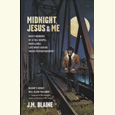The Wonder of Her Smile
In his first novel, Carson Morton sends readers to the Louvre in the company of thieves
It is called the Valfierno myth. A 1932 Saturday Evening Post article told the story of a man who called himself the Marques Eduardo de Valfierno and who claimed to have masterminded the 1911 theft of the Mona Lisa. Valfierno described himself as a brilliant con man who had arranged the theft so he could sell forgeries of da Vinci’s masterpiece to various rich industrialists, each of whom would believe he had acquired the real painting. There is no independent verification for this intriguing tale, but it has inspired more than one writer of fiction. The latest is Nashvillian Carson Morton, who offers his interpretation of the legend in a fine first novel, Stealing Mona Lisa.
Morton’s Marquis de Valfierno (using the French spelling of his title) is the archetypal confidence man—suave, sophisticated, and driven as much by love of art as by greed. He is a scoundrel for whom the reader can root without guilt. Morton, a London-born musician, screenwriter, and playwright, has conjured an equally affable group of supporting rogues to accompany the master grifter on his greatest con: a beautiful American pickpocket, an emotionally wounded Parisian street tough, a gruff but loving landlady, and a genius artist named Diego. Discovering the talents and secrets of the conspirators is half the fun of this excellent debut. Morton has peppered his story with enough real people to make his effort at speculative history both plausible and enjoyable. And the true villain of the piece is Valfierno’s intended victim, Joshua Hart, a robber baron so despicable that being swindled out of a huge sum of money seems a wholly inadequate punishment.
 There is a seed of truth in Morton’s story: the Mona Lisa really was stolen from its perch in the Louvre in 1911. It disappeared for two years, held by an Italian named Peruggia, who later admitted to walking out of the museum with the painting under his coat. Italian nationalism was his stated motive –he erroneously believed the famed work had been stolen from his native land by Napoleon—but he ended up getting nothing more than a prison sentence for his trouble. Peruggia is also integral to the plot of Stealing Mona Lisa, assisted, in a clever twist of fiction, by two squabbling accomplices.
There is a seed of truth in Morton’s story: the Mona Lisa really was stolen from its perch in the Louvre in 1911. It disappeared for two years, held by an Italian named Peruggia, who later admitted to walking out of the museum with the painting under his coat. Italian nationalism was his stated motive –he erroneously believed the famed work had been stolen from his native land by Napoleon—but he ended up getting nothing more than a prison sentence for his trouble. Peruggia is also integral to the plot of Stealing Mona Lisa, assisted, in a clever twist of fiction, by two squabbling accomplices.
In Morton’s novel, Valfierno’s plan is, on its face, simple. Steal the painting, keep it hidden but safe, and sell exact copies to rich men who believe they are entitled to possess whatever their money can buy, secreted away where only they can enjoy it. The Marquis has cultivated his victims by selling them other forgeries he has passed off as originals, explaining to each of them, as he does to Hart, that the real forgeries are the paintings on display: “Señor, every museum worth its salt has copies of its most important works ready to put up at a moment’s notice.” Such lies will not work with the Mona Lisa, however. The painting, even in 1911, is too famous to be merely replaced without notice. Valfierno must really steal it, with the resulting headlines providing “evidence” that the copies he is peddling must be the genuine article. As with all good heist stories, Morton has asked himself, “What could possibly go wrong?” then proceeded to answer the question with a series of mishaps and double crosses that leave the conspirators constantly on the edge of disaster.
Great art has always inspired wonder and contemplation, and the Mona Lisa, as the world’s most famous painting, is one of the greatest muses in history. A seemingly simple work, it is as full of mystery as any novel: “Is that a smile, the picture of contentment,” Morton’s artist Diego asks of da Vinci’s lady, “or are her lips tightly pursed, keeping some profound secret that has endowed her with scandalous or even dangerous knowledge that no one else possesses?” That wonderful smile hovers over all of Stealing Mona Lisa.
Morton has seemingly written his own review and hidden it within his first novel like the secret signature of a painter: when talking with an artist friend, Valfierno observes, “Inspiration is just another word for heart, and you always find a way to put your heart into all your work.” Here’s hoping Carson Morton will continue to put his own heart into the art of fiction.
Carson Morton will discuss Stealing Mona Lisa at Barnes and Noble Booksellers in Brentwood on August 18 at 7 p.m. He will also appear at the 2011 Southern Festival of Books, held October 14-16.


